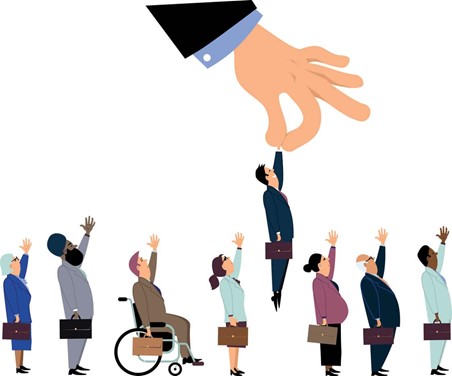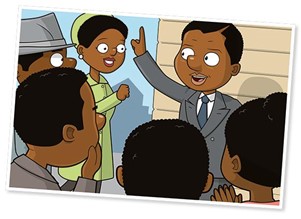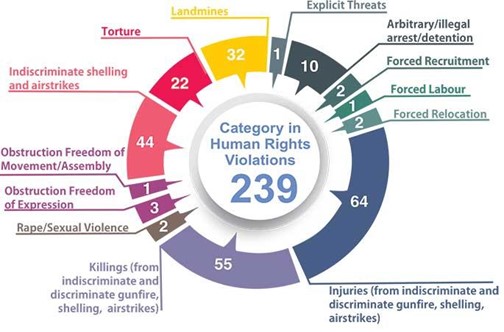HUMAN RIGHTS AND SOCIAL JUSTICE, PEACE AND CONFLICTS
UNIT „HUMAN RIGHTS AND SOCIAL JUSTICE, PEACE AND CONFLICTS – PART 1”
This part of the lecture gives definition of human rights and provides examples of the human rights’ categories.
Level: A1-A2
Learning outcomes:
– Vocabulary on human rights and human rights’ categories
– Reading comprehension
– Speaking and discussion
Activities - PART 1
Duration: 10 min |
Learning outcome: + Changing perspectives + Critical thinking + Open-mindedness + Understanding the concept of human rights |
Learning skills: Vocabulary Speaking |
What are human rights?Source: US Embassy & Consulates in Brazil. (2018). Statement by Secretary Pompeo on Human Rights Day. Read the text below and discuss with your classmates the following questions: 1. What is “Human rights”? 2. Who protects human rights? 3. What rights are contained in the Universal Declaration of Human Rights? 4. What do you know about human rights in your country? All people are born with rights, which are protected by the law and government. These rigths are called human rigths. |
Duration: 10 min |
Learning outcome: + Self-reflection + Critical thinking + Reading comprehension + Understanding the concept of human rights |
Learning skills: Vocabulary Reading Grammar |
Read the text below and complete the sentences: The Universal Declaration of Human Rights protects the right to life, the right to liberty and security, the freedom from arbitrary arrest, the right to fair trial, the freedom of movement, the freedom of speech, the right to work and education, the right to raise a family, etc.
 Time’s up |
Duration: 20 min |
Learning outcome: + Self-reflection + Critical thinking + Reading comprehension + Understanding the categories of human rights |
Learning skills: Vocabulary Reading Grammar Comprehension |
 Time’s up
Source: The life of Rosa Parks. (2005). National Geographic Kids. |
|
Duration: 15 minutes reading + 10 minutes writing |
Learning outcome: + Self-reflection + Critical thinking |
Learning skills: Vocabulary Reading Grammar Comprehension |
Read the text about Rosa Parks and complete the following exercises
Answer the questions about Rosa Parks.  Time’s up Discuss with your class the questions about Rosa Parks. 6. What do you think about racism? 7. Are there segregation laws in your country? 8. Is equality important? 9. Do you know other human rights’ activists? If yes, please explain to your classmates.
Source: The life of Rosa Parks. (2005). National Geographic Kids. |
Duration: 15 min |
Learning outcome: + Discussion + Critical thinking + Speaking |
Learning skills: Vocabulary Speaking |
Look at the following images and discuss with your classmates what you have understood so far about human rights. Try to use appropriate vocabulary.
Source: i-sight.com |
Duration: 15 min |
Learning outcome: + Self-reflection + Critical thinking |
Languagr skills: Vocabulary |
Match the definitions to the explanations: Time’s up |
Duration: 15 minutes reading + 30 minutes |
Learning outcome: + Self-reflection + Critical thinking + Speaking |
Language skills: Vocabulary Reading |
Read the text about Nelson Mandela and complete the following exercises: In history, lots of people around the world have faced discrimination – where they are treated differently because of their race, skin colour, gender, age and lots of other things, too. But there are some amazing people who have worked hard to make a change for the better, and help us move towards a world where everyone is treated fairly and equally. One such person is Nelson Mandela. South Africa is home to many different peoples and cultures – so much so that it’s been nicknamed the ‘rainbow nation’. But, sadly, at the time that Nelson Mandela was growing up, there was a huge racial divide in the country. White people ran the country, and they generally led privileged lives with good jobs, nice homes and access to good schools and healthcare. Most black people, however, worked in low-paid jobs, and lived in poor communities with poor facilities. They had far fewer rights, too – they weren’t even allowed to vote in elections! Source: The life of Nelson Mandela. (2005). National Geographic Kids.
Time’s up |
UNIT „HUMAN RIGHTS AND SOCIAL JUSTICE, PEACE AND CONFLICTS – PART 2”
This part of the lecture gives definition of human rights violations and provides examples of the human rights violations.
Level: A1-A2
Learning outcomes:
– Vocabulary on human rights and human rights’ categories
– Reading comprehension
– Speaking and discussion
– Vocabulary
Activities - PART 2
Duration: 10 min |
Learning outcome: + Changing perspectives + Critical thinking + Open-mindedness + Understanding the concept of human rights violations |
Language skills: Vocabulary Reading comprehension |
Please read the short text about human rights violations and complete the missing word in the sentences. What is the meaning of VIOLATION? A state commits human rights violations either directly or indirectly. Violations can either be intentionally performed by the state and or come as a result of the state failing to prevent the violation. The violation can be physically violent, such as police brutality, while rights such as the right to a fair trial can also be violated, where no physical violance is involved. The second type of violation – failure by the state to protect – occurs when there’s a conflict between individuals or groups within a society. If the state does nothing to intervene and protect vulnerable people and groups, it’s participating in the violations.
Useful Vocabulary:
Complete the missing word in the sentences  Time’s up Discuss with your classmates the following questions. 5. What are human rights violations? 6. Who commits human rights? 7. What are the two types of human rights violations? 8. What are direct human rights violations? 9. What are indirect human rights violations? |
Duration: 20 min |
Learning outcome: + Self-reflection + Critical thinking + Reading comprehension + Understanding the categories of human rights |
Language skills: Vocabulary Reading Grammar Comprehension |
Look at the graph about human rights violations and read the text below.
Useful Vocabulary:
Decide if the following statements are TRUE or FALSE.  Time’s up |













